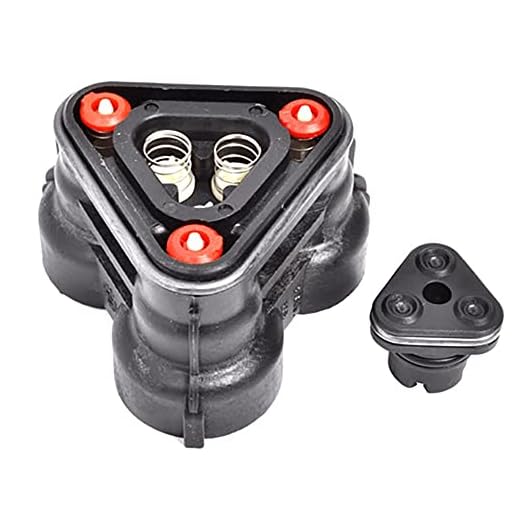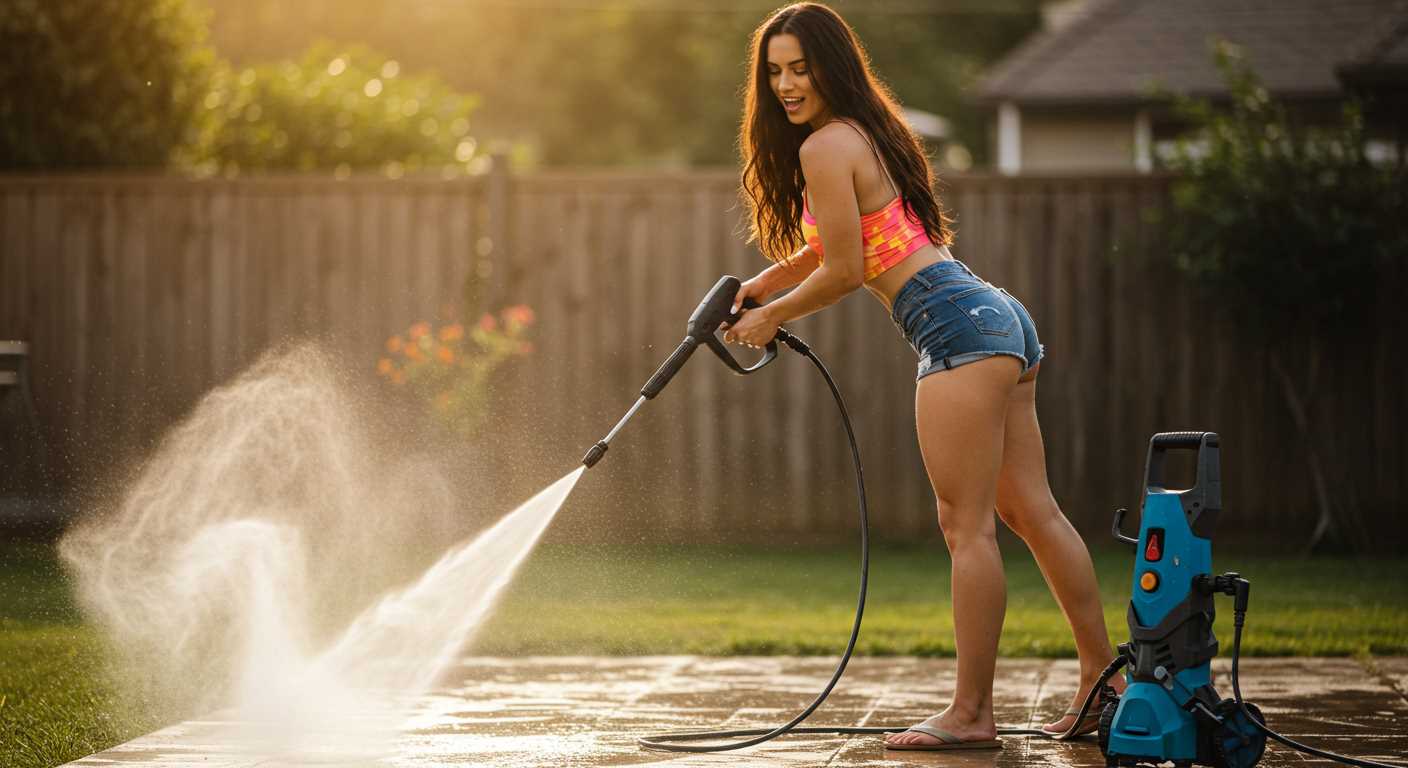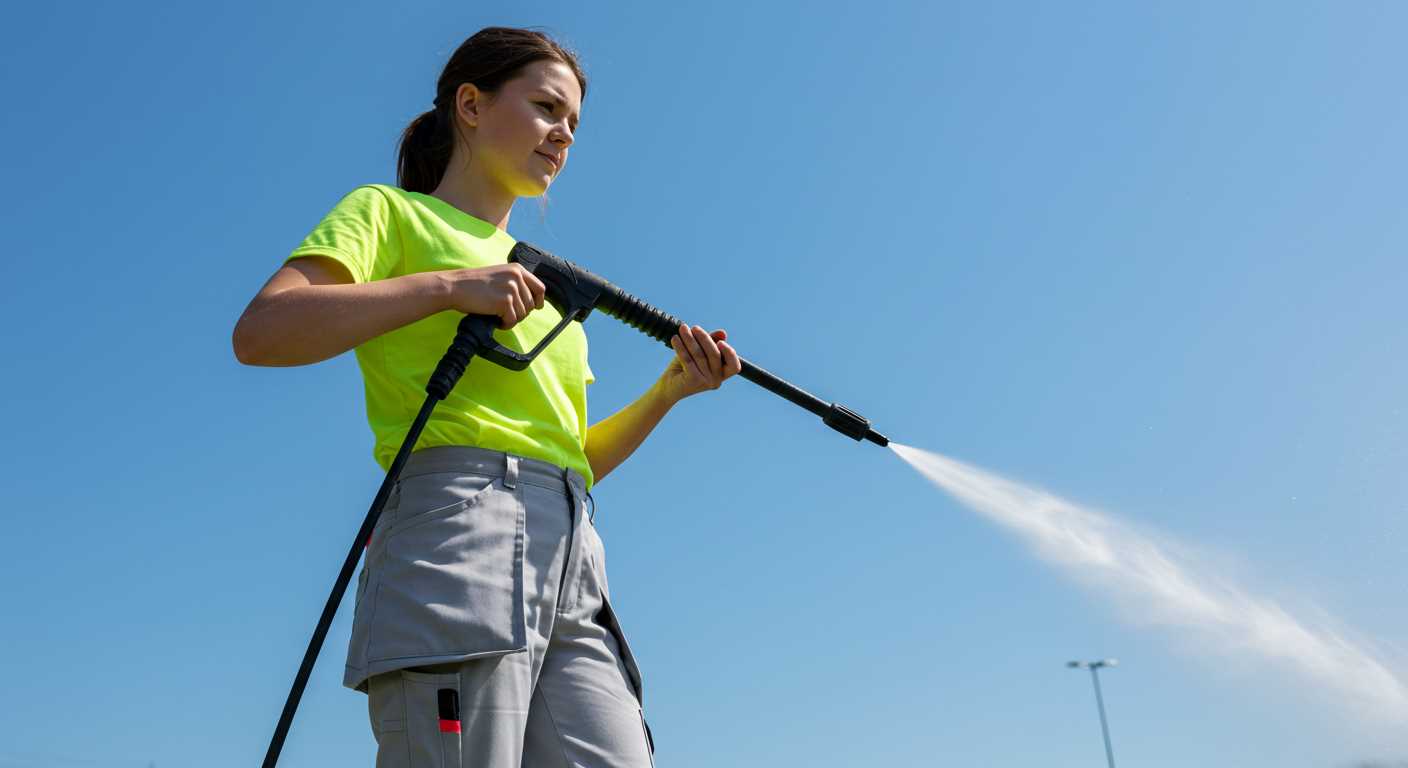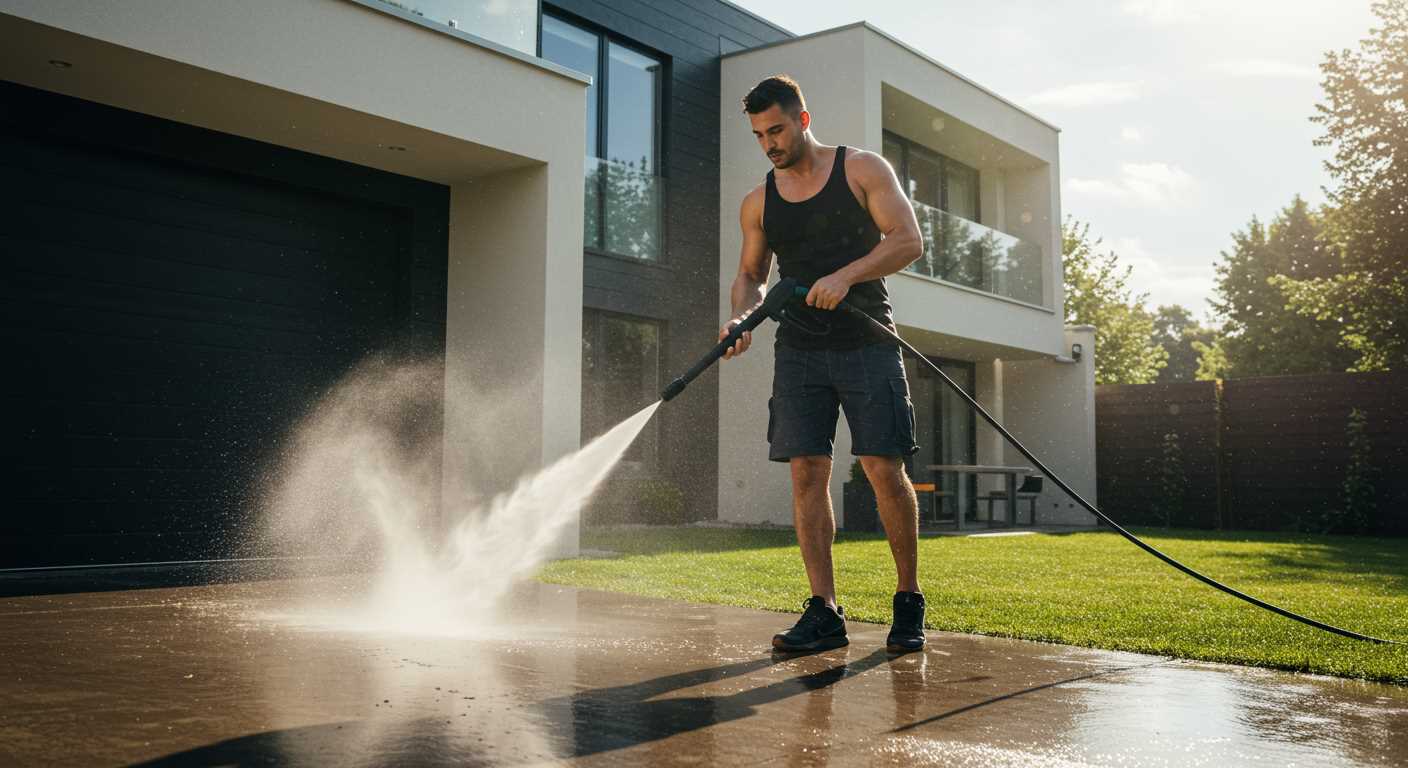



Begin by identifying individuals with substantial experience in maintaining and fixing high-pressure cleaning devices. Skilled technicians, particularly those who specialise in outdoor power equipment, are the most suitable candidates for the task.
Seek out local service centres or authorised repair shops that focus on high-performance machinery. These facilities often employ technicians who receive ongoing training and technical support from manufacturers, ensuring they stay current with repairs and maintenance best practices.
Additionally, consider reaching out to experienced DIY enthusiasts or local mechanics familiar with various brands. They might offer insights and assistance, especially if they have a strong background in electrical components and fluid dynamics associated with these machines.
Online forums and communities can also provide valuable resources, from troubleshooting tips to recommendations for skilled technicians. Interacting with other users can enhance your understanding of common issues and effective solutions.
Qualified Technicians and Service Centres
For optimal restoration of your equipment, seeking out authorised service centres is crucial. These facilities employ technicians trained specifically in the intricacies of the brand. This ensures adherence to manufacturer guidelines and access to original parts.
When considering an independent repair specialist, check for:
- Accreditations or certifications demonstrating expertise with high-pressure cleaning equipment.
- A solid reputation within the community, supported by customer reviews and testimonials.
- Access to genuine replacement components to ensure longevity and performance post-repair.
Alternative options include:
- Contacting the manufacturer’s customer service for recommendations on trusted repair options.
- Utilising online forums and discussion groups to gather insights from other users about their repair experiences.
Regular maintenance can prevent the need for repairs. Always consult the user manual for maintenance schedules and recommended upkeep procedures. Keeping your device clean and stored properly greatly reduces wear and tear.
Identifying Common Issues with Karcher Pressure Washers
.jpg)
First and foremost, a frequent problem involves low pressure, often resulting from a clogged nozzle or worn-out seals. Start by inspecting the nozzle for debris and clean it with a soft brush or needle. If the seals show signs of wear, replacing them should restore function.
Another common challenge is the unit not starting. Check that the power supply is functioning and the plug is securely connected. If there’s no power, the fault may lie in the internal wiring or a blown fuse, necessitating a thorough inspection.
High-pitched loud noises during operation can indicate air leaks in the hoses or issues with the pump. Examine all connections and hoses for cracks or loose fittings; tightening or replacing damaged parts can often resolve the issue.
Inconsistent water flow usually signals a blockage within the hose or filter. Detach the filter from the water inlet and flush it to remove accumulated dirt. If the hose itself is kinked or damaged, replacing it will ensure continuous flow.
Lastly, check for overheating, which can occur if the machine runs for too long without breaks. Ensure that the unit has adequate cooling. If overheating persists, a more detailed review of the motor and pump may be necessary to prevent damage.
DIY troubleshooting tips for Karcher models
Begin by checking the power supply. Ensure the outlet is functioning and the cord is not damaged. A multimeter can help verify voltage at the outlet.
If the unit fails to start, inspect the trigger mechanism. Often, a stuck or malfunctioning trigger can prevent operation. Try releasing and re-engaging the trigger several times.
In case of low water pressure, verify the water supply. A garden hose with kinks or obstructions can hinder flow. Clear any blockage and ensure a steady water source is connected.
For weird noises during operation, listen for any irregular sounds that may indicate a problem within the motor or pump. Turn off the equipment and check for loose components or debris caught in the system.
Whenever you detect leakage, inspect the hose, fittings, and seals. Check for cracks or wear, which can allow water to escape. Replacing faulty parts can eliminate leaks.
If you experience excessive vibrations, examine the attachment nozzles. They should be securely fastened. A loose nozzle can increase vibration, leading to potential damage.
Cleaning the filter screen is key. Remove any debris that has built up inside the unit to maintain optimal performance. Regular maintenance of the inlet filter can prevent clogging.
Should you find issues with detergent application, inspect the detergent nozzle. A clogged nozzle may prevent cleaner from mixing. Clean thoroughly to restore function.
Finally, always consult the user manual for specific troubleshooting guidance relevant to your model. It provides detailed steps tailored for your device and can offer insights based on common problems observed with various units.
Finding authorised service centres

For authentic assistance with your cleaning equipment, the quickest way is to visit the official Kärcher website. There, a section dedicated to customer service contains a tool to locate nearby service centres. Simply enter your postcode, and it will generate a list of authorised locations. Make sure to choose one that offers specialised support for your model, as this ensures technicians have the required skills and genuine parts.
Another reliable option involves calling Kärcher’s customer service hotline. Representatives can provide immediate information on authorised centres in your area. They can also assist with any preliminary questions or issues you might face, guiding you before deciding on a service visit.
Additionally, checking local business directories or online reviews can be valuable. Look for services that focus on cleaning equipment and have positive feedback from previous customers. This can help you find technicians who not only sell but also possess extensive experience in maintenance and troubleshooting.
When you arrive at a service centre, verify that they use original components for repairs. This is crucial in ensuring both the longevity and performance of your equipment. Having a warranty on repairs can also add extra assurance.
Do not hesitate to ask about the technicians’ credentials and experience with specific models. This will give you confidence that your equipment is in knowledgeable hands. An informed approach can lead to optimal service and proper care for your cleaning devices.
Hiring Local Repair Technicians for Cleaning Equipment
Seek out local technicians who have a solid reputation and proven track record with various models of cleaning devices. Check online reviews and ratings on platforms like Google or Trustpilot to gauge their reliability and customer service standards.
What to Look For
Prioritise professionals with certification or specialised training in maintenance and servicing of cleaning units. Experience with specific brands will be advantageous, as these experts are likely to recognise issues more quickly and suggest effective solutions. Ask for estimates before any work begins, to avoid unexpected charges later. A trustworthy technician should be willing to provide an outline of the required repairs and the associated costs upfront.
Communicating Your Needs
Be precise about the symptoms your device exhibits. Describe issues in detail – such as unusual noises, leaks, or performance drops. This information helps the technician diagnose the problem efficiently. Requesting a warranty on the repairs performed can also be beneficial; it ensures that any recurring issues will be addressed without additional charges, enhancing peace of mind.
Evaluating the Expertise of Repair Professionals
Assess the qualifications of technicians by checking for certifications specific to cleaning equipment. These documents usually indicate relevant training and expertise in diagnosing and fixing operational faults.
Years of hands-on experience greatly influence a technician’s ability to resolve issues. Opt for someone with a strong background in servicing similar devices, particularly with models akin to your own.
Inquire about the tools and diagnostic equipment they utilise. Advanced, well-maintained tools enable precise diagnosis and efficient repairs, reducing the likelihood of recurring problems.
Look for testimonials or reviews from previous customers. Positive feedback regarding service quality and timeliness can help gauge reliability. Consider contacting references for additional insights into their performance.
Evaluate the warranties they offer on repairs. Professionals who provide guarantees demonstrate confidence in their workmanship, which can be reassuring.
| Criteria | Importance Level |
|---|---|
| Certifications | High |
| Experience | Very High |
| Diagnostic Tools | High |
| Customer Reviews | Moderate |
| Repair Warranty | High |
Engage in discussions regarding their troubleshooting methods. A knowledgeable technician will clearly articulate their approach, showcasing their understanding of common issues and effective solutions.
Finally, ensure the professional is familiar with the specific parts and components used in your unit, as this knowledge is essential for accurate repairs and maintenance.
Understanding Warranty Implications for Repairs

Before proceeding with any maintenance, familiarise yourself with the warranty terms. In many cases, third-party intervention may void the warranty, limiting access to manufacturer support.
Key Tips
- Always examine the warranty policy. Pay special attention to clauses related to unauthorised repairs.
- Document all modifications or servicing performed on the unit. This may be crucial if a warranty claim arises.
- Seek manufacturer-approved service only if the warranty is a priority. These technicians typically have access to genuine parts and necessary training.
- Communicate with the manufacturer or the retailer regarding any intended repairs. They may offer guidance on qualified technicians.
After-Warranty Repairs

If the warranty period has lapsed, you have more flexibility in choosing professionals. However, ensure they use quality components to maintain the longevity of your equipment.
In summary, be proactive about understanding the warranty implications of your unit. This ensures you can make informed decisions regarding repair options without jeopardising future support from the manufacturer.
Cost factors associated with Karcher pressure washer repairs
Repair expenses vary significantly based on the issue at hand, labour rates, and whether parts need replacement. Common faults, such as motor failure or pump malfunctions, often require expensive components, impacting total costs.
Labour fees depend on the technician’s expertise and location. Urban areas generally have higher rates than rural locales. Expect service charges to average between £50 and £100 per hour. Quick fixes may take less time, while comprehensive diagnostics can extend labour needs.
Parts replacement is another major factor. Original equipment manufacturer (OEM) components tend to be pricier than aftermarket options but often come with a quality guarantee. Be cautious; opting for cheaper parts may save money initially but could result in higher costs down the line due to premature failure.
Warranty status influences expenses significantly too. If the appliance is under warranty, repairs may incur minimal to no costs. Once the warranty expires, however, expenses revert to the owner. Additionally, specific issues might not be covered, even during the warranty period, leading to unexpected expenses.
Regular maintenance prolongs lifespan and can reduce repair frequency and costs. Investing in periodic check-ups may seem unnecessary at first, but it often saves money in the future by avoiding major breakdowns.






